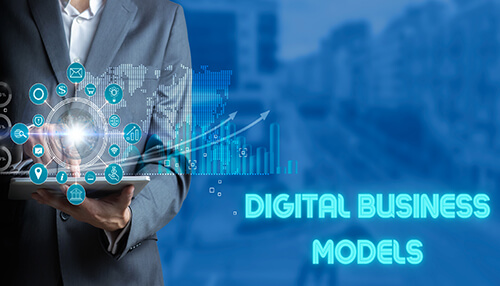Many organizations aspire to become digital-first businesses, true digital business models or adopt digital transformation. Maturity in adopting digital technologies offers numerous strategic benefits while unlocking several long- and short-term benefits. It is likely to impact the bottom line as well as drive competitive benefits. It is also a factor to be considered for long-term business survival.
8 Digital Business Models characteristics to know
1. Digital innovation culture:
Digital is stated to be a catalyst when innovation is concerned. Often, truly digital organizations do have an innovative culture where the desire is to experiment and develop new services, products and ways to work. Moreover, digital maturity offers immense opportunities to innovate. It also provides employees with new tools to implement different types of ideas. Successful digital innovation produces enhanced digital innovation using appropriate approaches, processes and tools.
2. Less hierarchical culture and flatter organization:
Organizations are mostly hierarchical, with multiple management layers. Thus, it results in developing a risk-averse culture, making it tough to become agile while reducing fast decision-making abilities. Digital organizations that want to enhance customer experiences tend to invest in the latest digital platforms. This is mostly in internal communication and collaboration tools. Senior management can directly communicate with lower levels using the latest digital tools and vice versa.
3. Using analytics and data to improve continuously:
There are several digital transactions in true digital businesses with both employees and target audiences. It creates valuable data, allowing companies to use dashboards and analytics to gain better insights and come up with improvements. The possibilities only get more interesting as data is combined from diverse sources and systems. Digital organizations tend to exploit data to the maximum.
4. Leaders embracing digital power:
Getting the inspiration to adopt a digital business strategy can be a tough task. Strong leadership is desired with a confident vision. Leaders should embrace digital power and should not hesitate. Digital platforms should be used both internally and externally. Also should be advocated approaches and strategies with digitization as its core.
5. Digital upskilling and literacy:
It is crucial to get your workforce to become ‘digital literates’. To derive the maximum from the digital tools and optimize the target audience experience, your employees should be provided with the latest knowledge, skills and resources. Digital-first companies generally invest in ongoing support, learning and training their teams. This automatically increases overall work productivity and reduces workplace hassles.
6. Process hyper-automation:
Artificial Intelligence (AI) and automation offer future and current opportunities, thereby enhancing productivity. Companies that have adopted digital technologies have undergone significant changes. With their manual processes digitized, they have been enjoying greater efficiency, saving time and reducing expenses. True digital businesses automate their processes continuously, thereby improving services and increasing overall productivity. Improved processes offer collective benefits derived from hyper-automation.
7. Optimized digital employee experience:
A strong link exists between employee and customer experiences. Without good experience derived from everyday tasks, your employees are likely to derive inefficient internal processes while being discontented. This is likely to have a negative impact on customer satisfaction. True digital businesses tend to invest heavily in providing excellent digital employee experiences. They are aware of the fact that it does have an impact on everything, ranging from profitability to employee turnover to customer feelings concerning their brand.
8. Customer-centric approach:
The digital business strategy focuses mainly on enhancing customer satisfaction. Companies have been increasingly interacting with customers through different digital platforms. Hence, focus on customer service and digital go side-by-side. Companies prefer to invest in various digital platforms as it help develop rich digital touchpoints, especially with customers. Customer-centric means availing of good data and understanding them better to enhance their experiences.
Therefore, the above digital business models, when clearly understood and implemented, can help your organization move ahead of the competition.




